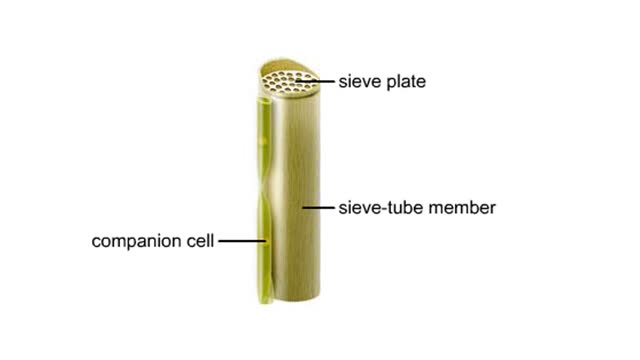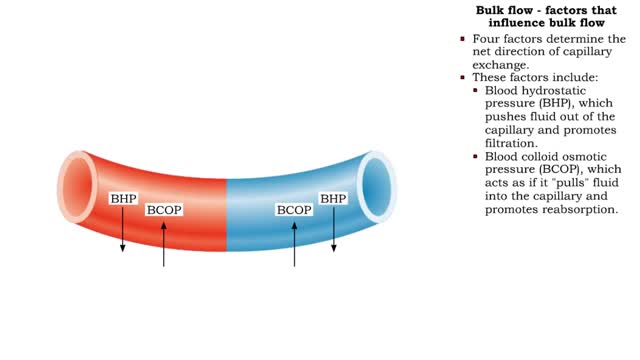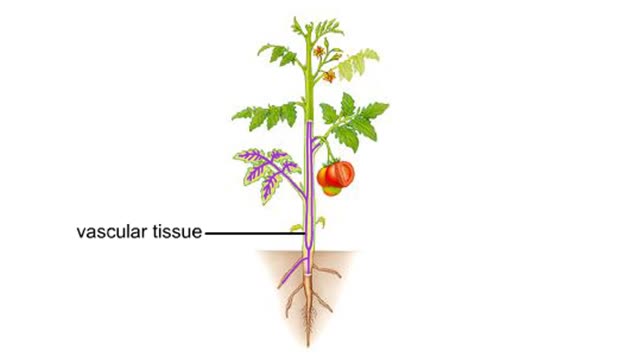The Pressure Flow Model in a Plant
By: HWC
Date Uploaded: 07/24/2020
Tags: homeworkclinic.com Homework Clinic HWC vascular system of plants xylem phloem transpiration pressure flow model IC cells sink cells photosynthetic leaf cells sieve tubes osmosis turgor pressure The Pressure Flow Model in a Plant
The vascular system of plants has two transport tissues, called xylem and phloem. Xylem transports water and minerals, while phloem transports a variety of dissolved substances, including sugars and amino acids, throughout the plant. Water in the xylem always moves up, in the direction from the roots to the leaves. At the leaves, water evaporates. This evaporation, called transpiration, creates tension at the top of the water column in the xylem, and causes water to be drawn upward from the roots. Unlike in the xylem, the solution in the phloem can flow up or down the plant. The direction depends on the concentration of solutes in the phloem. A model, called the pressure flow model, describes how sucrose concentrations determine the direction of the flow. Two types of cells—source IC cells and sink cells—play roles in the transport of solutions in the phloem. Source cells produce sucrose and load it into the phloem. Source cells are typically photosynthetic leaf cells, but they can also be other cell types. For example, root cells with large stores of carbohydrates can act as source cells by releasing these carbohydrates into the phloem. Sink cells are any cells that I unload sucrose from the phloem. Sink cells are found throughout the plant, but are abundant in roots or developing fruits and shoot tips. Sink cells typically cannot meet their own needs for carbohydrates and must import them from the phloem. The fluid begins to flow when source cells pump sucrose into the phloem. As the concentration of sucrose in the phloem increases, water enters the sieve tubes by osmosis. The water enters from any surrounding tissues, such as the xylem, that have lower solute concentrations than the phloem. As water flows into the sieve tubes, the turgor pressure within the sieve tubes increases. This pressure forces the sugar solution through the sieve tubes to regions of lower pressure. The solution passes by sink A cells, and these cells take up sucrose. As the sucrose concentration decreases, water flows by osmosis out of the phloem to regions of higher solute concentrations.The loss of water, in turn, decreases the pressure in the phloem, and pulls fluid from other, higher pressure regions of the phloem. In the first step of this model, sugar (mainly sucrose) is actively transported from source cells into the sieve tubes of the phloem. The addition of sucrose into the sieve tubes increases the concentration of this solute, causing water to flow into the sieve tubes by osmosis. With the entry of water, the sieve tube pressure near the source cells increases and forces the solution to move to regions of lower pressure. At the regions of lower pressure, sink cells remove the sucrose by active transport. As the sink cells pull the solute out of the phloem, water leaves the phloem by osmosis, passing to neighboring tissues that have higher solute concentrations. The retreating water reduces the pressure in this region of the sieve tubes and encourages fluid to continue to flow from regions of higher pressure. At different times of the year, a tissue may act as a source or a sink. For example, when leaves of a plant are young, they require more nutrients to grow than they can produce, and therefore they act as sinks. However, when the leaves have reached maturity, they make abundant sugars and act as sources. In the autumn, the plant translocates much of its sugar to storage organs such as stems and roots, which act as sinks and store it over winter in the form of starch. In the spring, these storage organs then act as sources, releasing this sugar for use by the rest of the budding and flowering plant.
Add To
You must login to add videos to your playlists.
Advertisement












Comments
0 Comments total
Sign In to post comments.
No comments have been posted for this video yet.